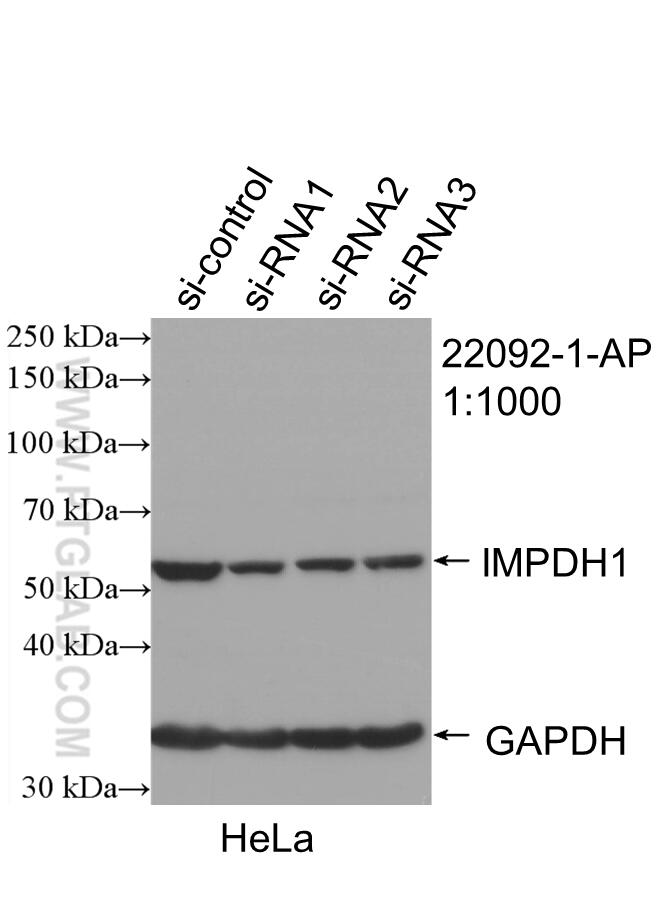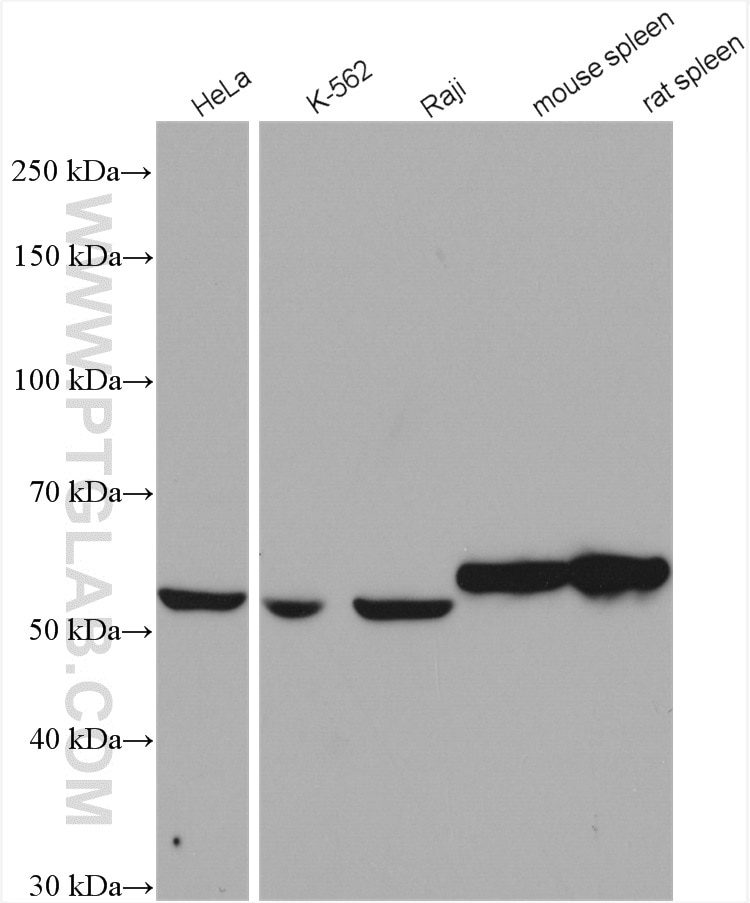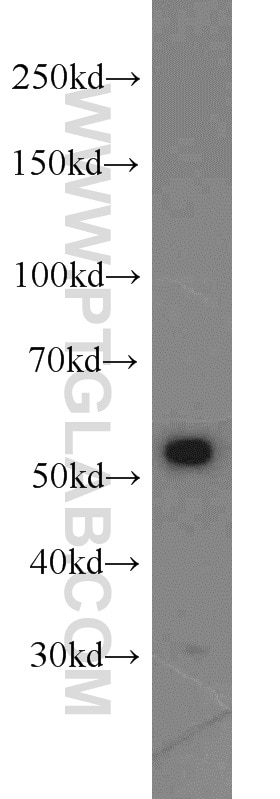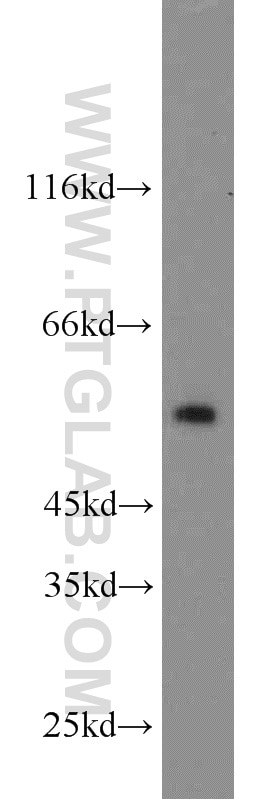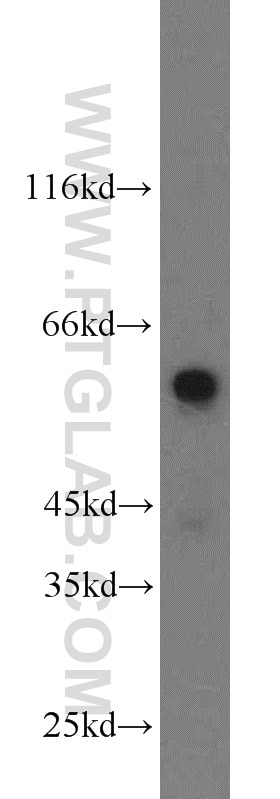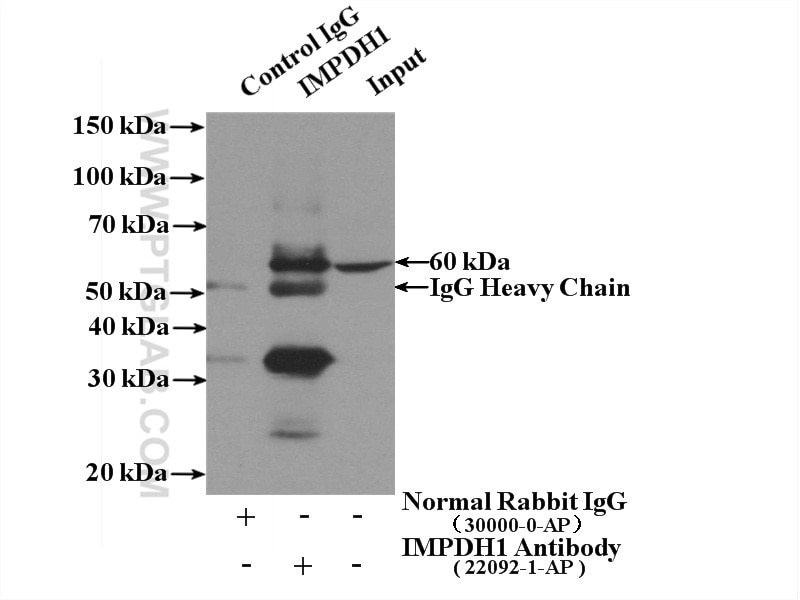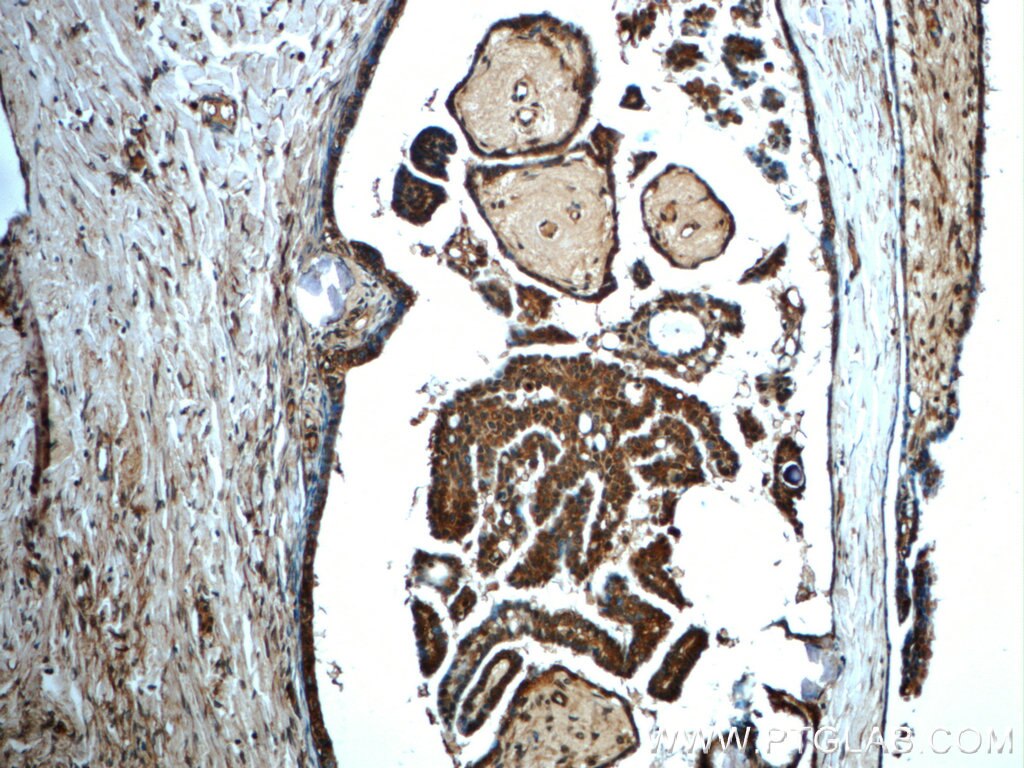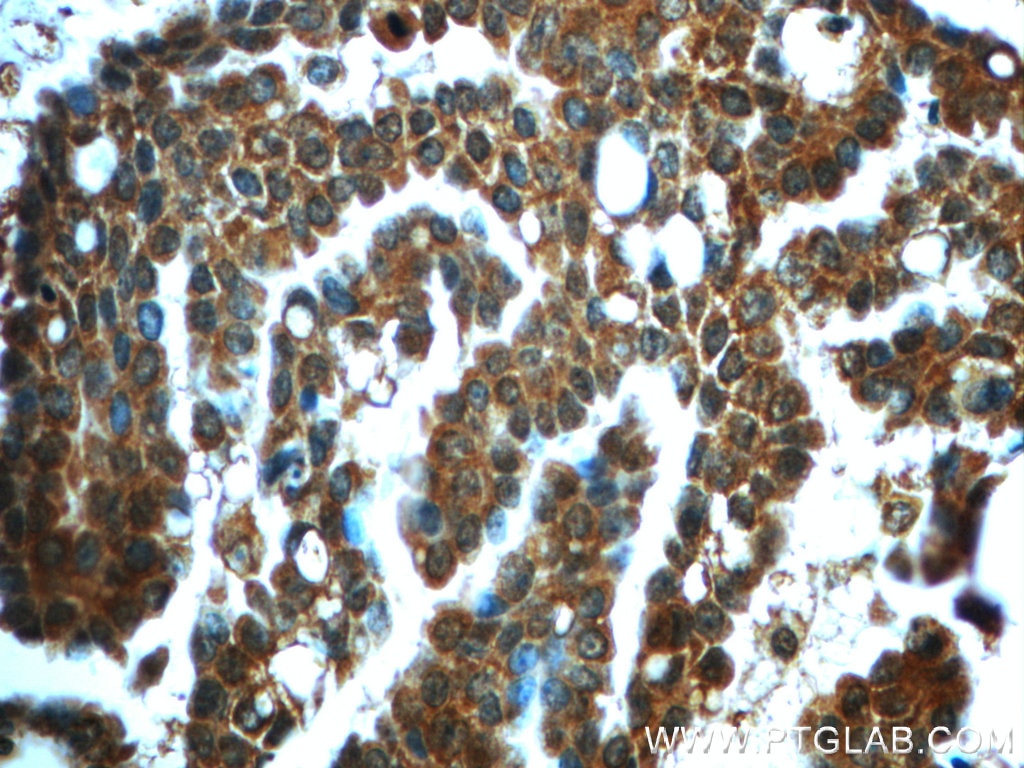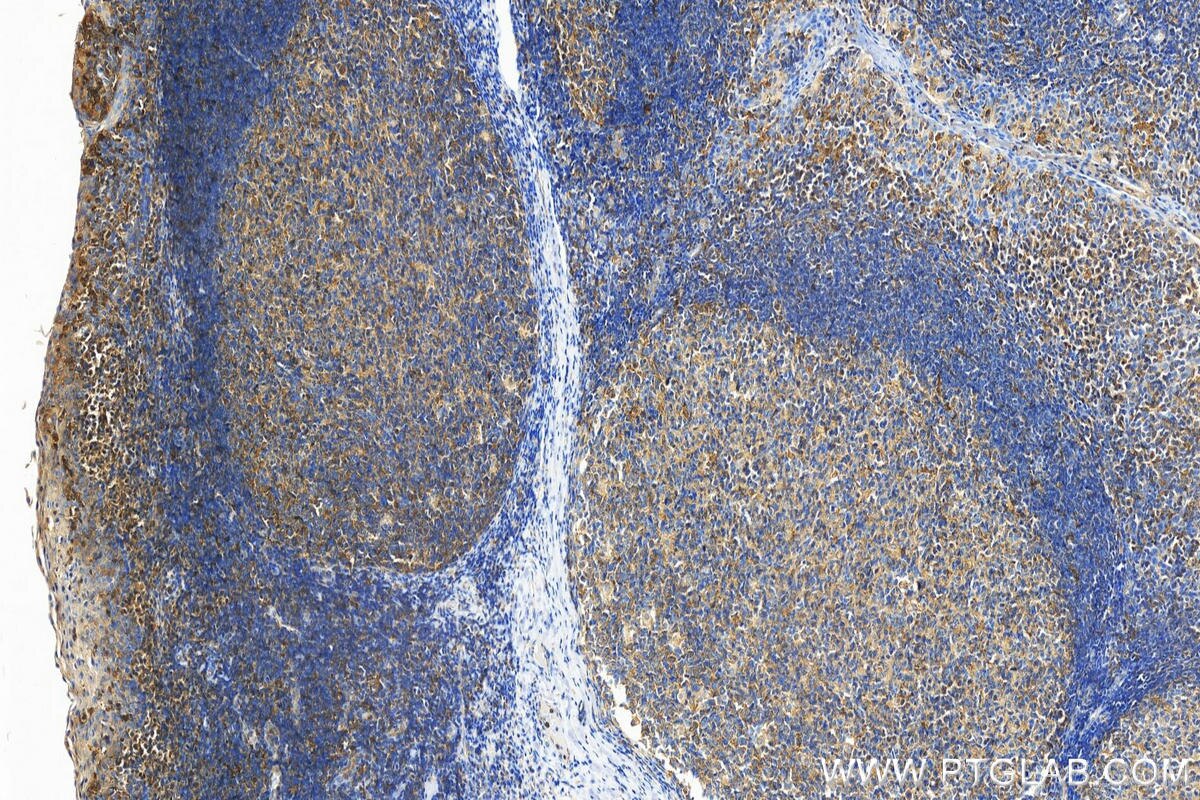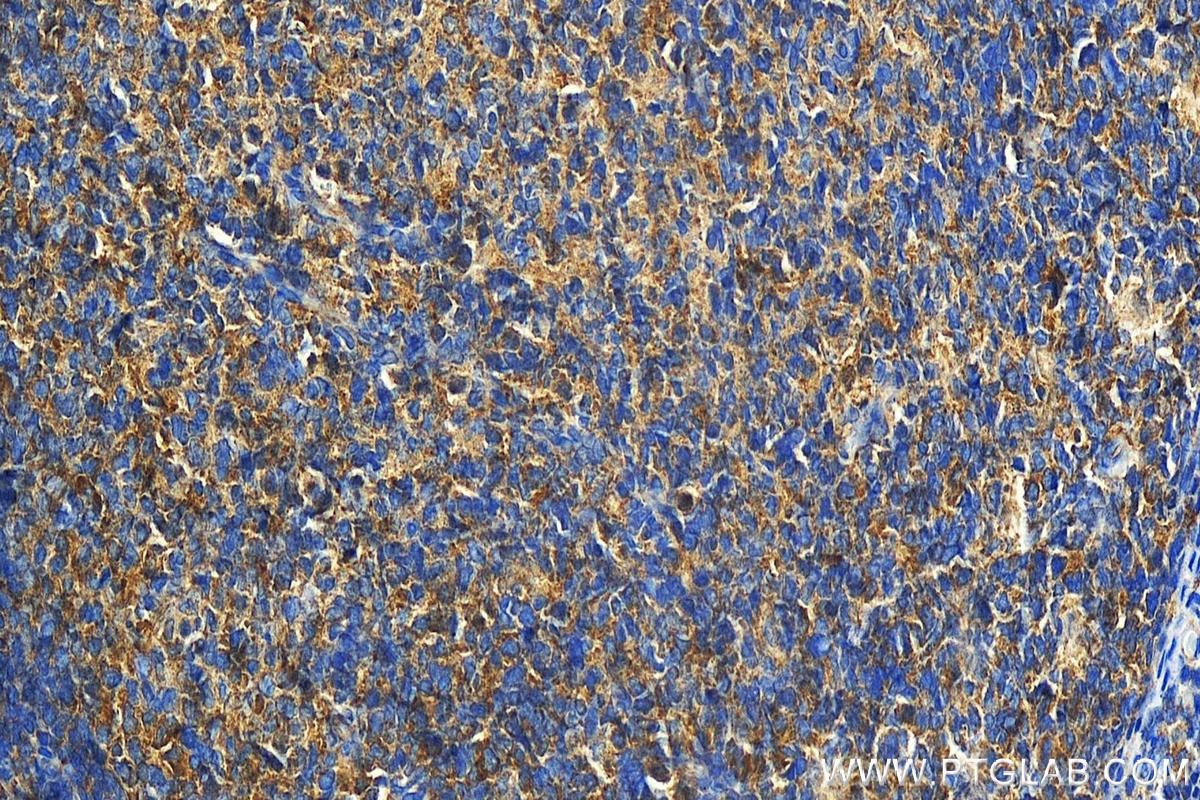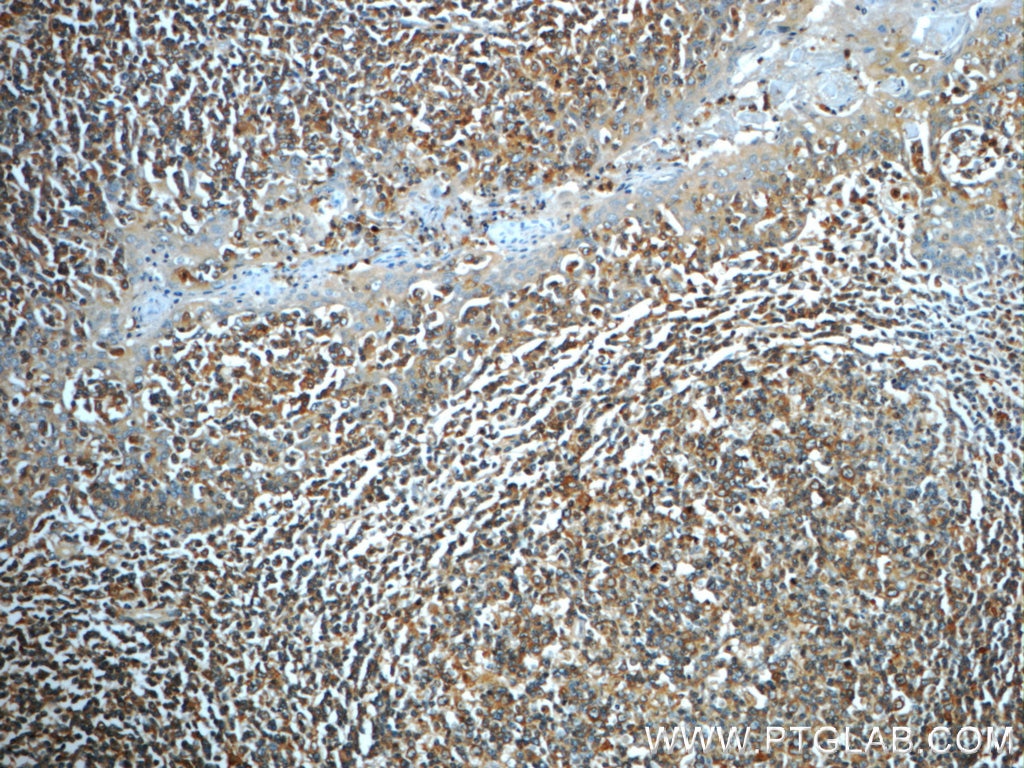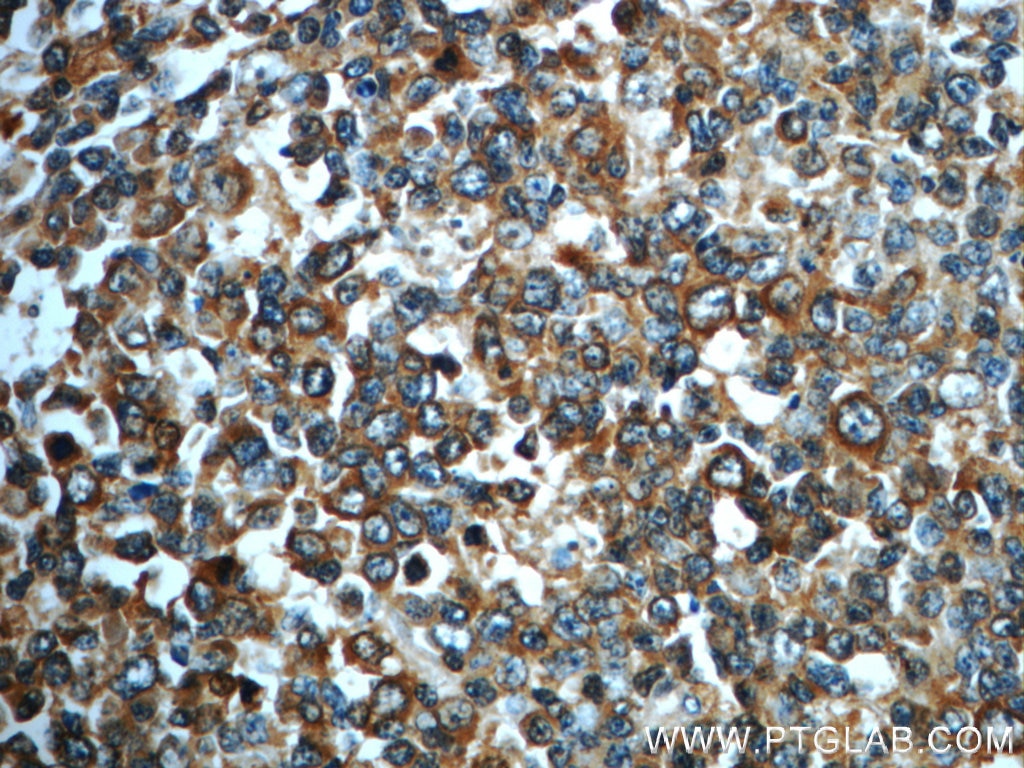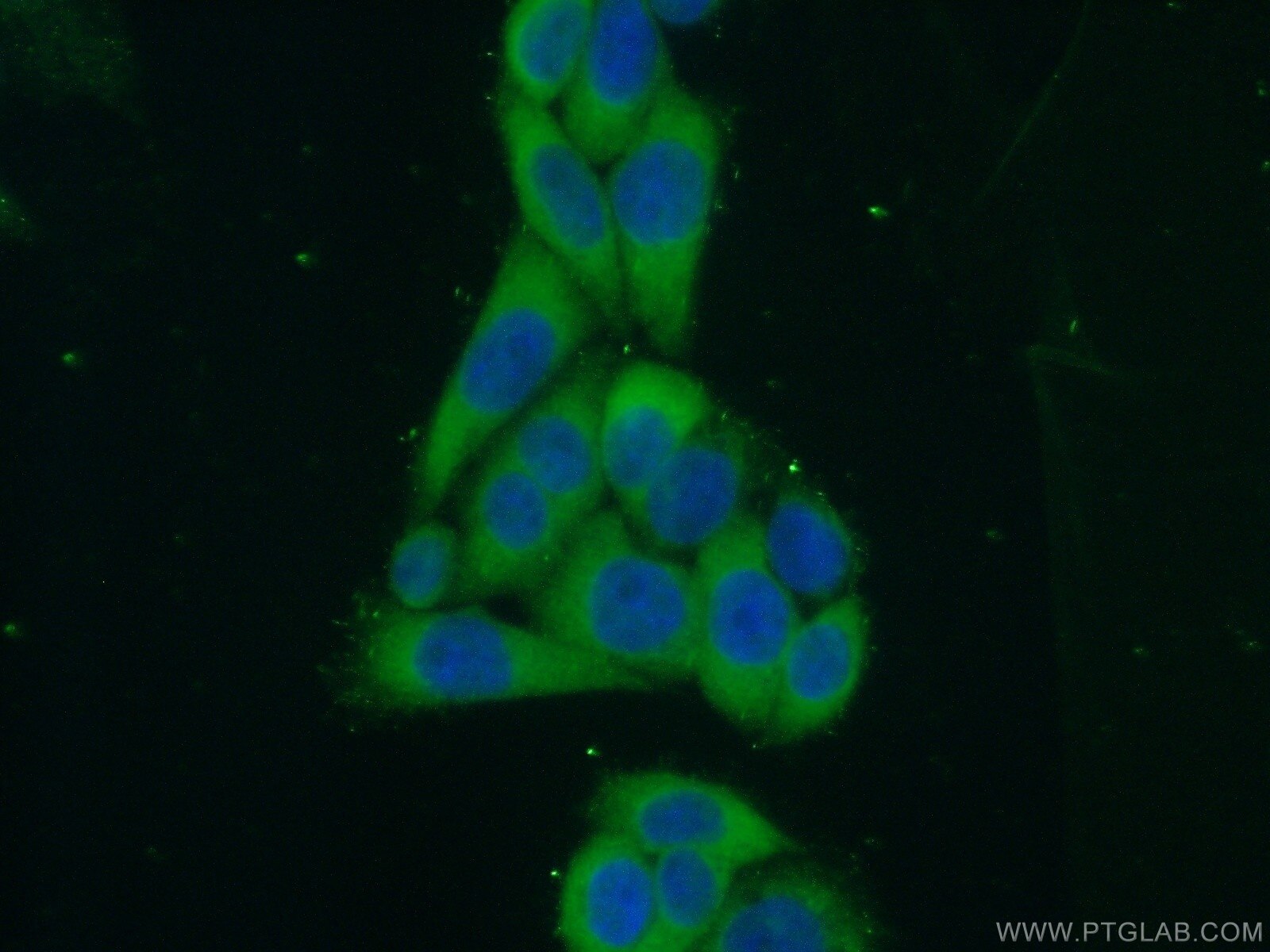- Featured Product
- KD/KO Validated
IMPDH1 Polyklonaler Antikörper
IMPDH1 Polyklonal Antikörper für WB, IHC, IF/ICC, IP, ELISA
Wirt / Isotyp
Kaninchen / IgG
Getestete Reaktivität
human, Maus, Ratte
Anwendung
WB, IHC, IF/ICC, IP, ELISA
Konjugation
Unkonjugiert
Kat-Nr. : 22092-1-AP
Synonyme
Geprüfte Anwendungen
| Erfolgreiche Detektion in WB | HeLa-Zellen, A431-Zellen, K-562-Zellen, Mausmilzgewebe, Raji-Zellen, Rattenmilzgewebe |
| Erfolgreiche IP | HeLa-Zellen |
| Erfolgreiche Detektion in IHC | humanes Tonsillitisgewebe, humanes Ovarialkarzinomgewebe Hinweis: Antigendemaskierung mit TE-Puffer pH 9,0 empfohlen. (*) Wahlweise kann die Antigendemaskierung auch mit Citratpuffer pH 6,0 erfolgen. |
| Erfolgreiche Detektion in IF/ICC | HeLa-Zellen |
Empfohlene Verdünnung
| Anwendung | Verdünnung |
|---|---|
| Western Blot (WB) | WB : 1:1000-1:6000 |
| Immunpräzipitation (IP) | IP : 0.5-4.0 ug for 1.0-3.0 mg of total protein lysate |
| Immunhistochemie (IHC) | IHC : 1:800-1:3200 |
| Immunfluoreszenz (IF)/ICC | IF/ICC : 1:20-1:200 |
| It is recommended that this reagent should be titrated in each testing system to obtain optimal results. | |
| Sample-dependent, check data in validation data gallery | |
Veröffentlichte Anwendungen
| KD/KO | See 3 publications below |
| WB | See 14 publications below |
| IHC | See 4 publications below |
| IF | See 5 publications below |
| IP | See 1 publications below |
Produktinformation
22092-1-AP bindet in WB, IHC, IF/ICC, IP, ELISA IMPDH1 und zeigt Reaktivität mit human, Maus, Ratten
| Getestete Reaktivität | human, Maus, Ratte |
| In Publikationen genannte Reaktivität | human, Maus |
| Wirt / Isotyp | Kaninchen / IgG |
| Klonalität | Polyklonal |
| Typ | Antikörper |
| Immunogen | IMPDH1 fusion protein Ag17297 |
| Vollständiger Name | IMP (inosine monophosphate) dehydrogenase 1 |
| Berechnetes Molekulargewicht | 563 aa, 60 kDa |
| Beobachtetes Molekulargewicht | 53-60 kDa |
| GenBank-Zugangsnummer | BC033622 |
| Gene symbol | IMPDH1 |
| Gene ID (NCBI) | 3614 |
| Konjugation | Unkonjugiert |
| Form | Liquid |
| Reinigungsmethode | Antigen-Affinitätsreinigung |
| Lagerungspuffer | PBS with 0.02% sodium azide and 50% glycerol |
| Lagerungsbedingungen | Bei -20°C lagern. Nach dem Versand ein Jahr lang stabil Aliquotieren ist bei -20oC Lagerung nicht notwendig. 20ul Größen enthalten 0,1% BSA. |
Hintergrundinformationen
IMPDH1(Inosine-5'-monophosphate dehydrogenase 1) is also named as IMPD1, IMP dehydrogenase 1 and belongs to the IMPDH/GMPR family. It catalyzes the rate limiting step of de novo guanine synthesis and an important target for the development of drugs with both chemotherapeutic and immunosuppressive activity. It may also have a role in the development of malignancy and the growth progression of some tumors. This protein has some isoforms produced by alternative splicing with the molecular mass of 53-65 kDa. This antibody may has cross reaction with IMPDH2 due to their high homology.
Protokolle
| PRODUKTSPEZIFISCHE PROTOKOLLE | |
|---|---|
| WB protocol for IMPDH1 antibody 22092-1-AP | Protokoll herunterladen |
| IHC protocol for IMPDH1 antibody 22092-1-AP | Protokoll herunterladenl |
| IF protocol for IMPDH1 antibody 22092-1-AP | Protokoll herunterladen |
| IP protocol for IMPDH1 antibody 22092-1-AP | Protokoll herunterladen |
| STANDARD-PROTOKOLLE | |
|---|---|
| Klicken Sie hier, um unsere Standardprotokolle anzuzeigen |
Publikationen
| Species | Application | Title |
|---|---|---|
Mol Cell ERK2 Phosphorylates PFAS to Mediate Posttranslational Control of De Novo Purine Synthesis. | ||
Mol Ther IMPDH1/YB-1 Positive Feedback Loop Assembles Cytoophidia and Represents a Therapeutic Target in Metastatic Tumors.
| ||
J Oncol The Role of Purine Metabolism-Related Genes PPAT and IMPDH1 in the Carcinogenesis of Intrahepatic Cholangiocarcinoma Based on Metabonomic and Bioinformatic Analyses
| ||
Cells Distinct Classes of Flavonoids and Epigallocatechin Gallate, Polyphenol Affects an Oncogenic Mutant p53 Protein, Cell Growth and Invasion in a TNBC Breast Cancer Cell Line. | ||
Int J Biochem Cell Biol Characterisation of inosine monophosphate dehydrogenase expression during retinal development: differences between variants and isoforms. | ||
Clin Chem Lab Med Reference standards for the detection of anti-mitochondrial and anti-rods/rings autoantibodies. |
Rezensionen
The reviews below have been submitted by verified Proteintech customers who received an incentive for providing their feedback.
FH Alexios (Verified Customer) (09-17-2025) | Immunofluorescence staining of iPSCs with IMPDH2 antibody showed a robust signal present in nearly all cells at 60× magnification, perinuclear. The distribution appeared consistent across the culture and aligned with patterns observed in other tested cell lines, supporting the specificity of the antibody signal.
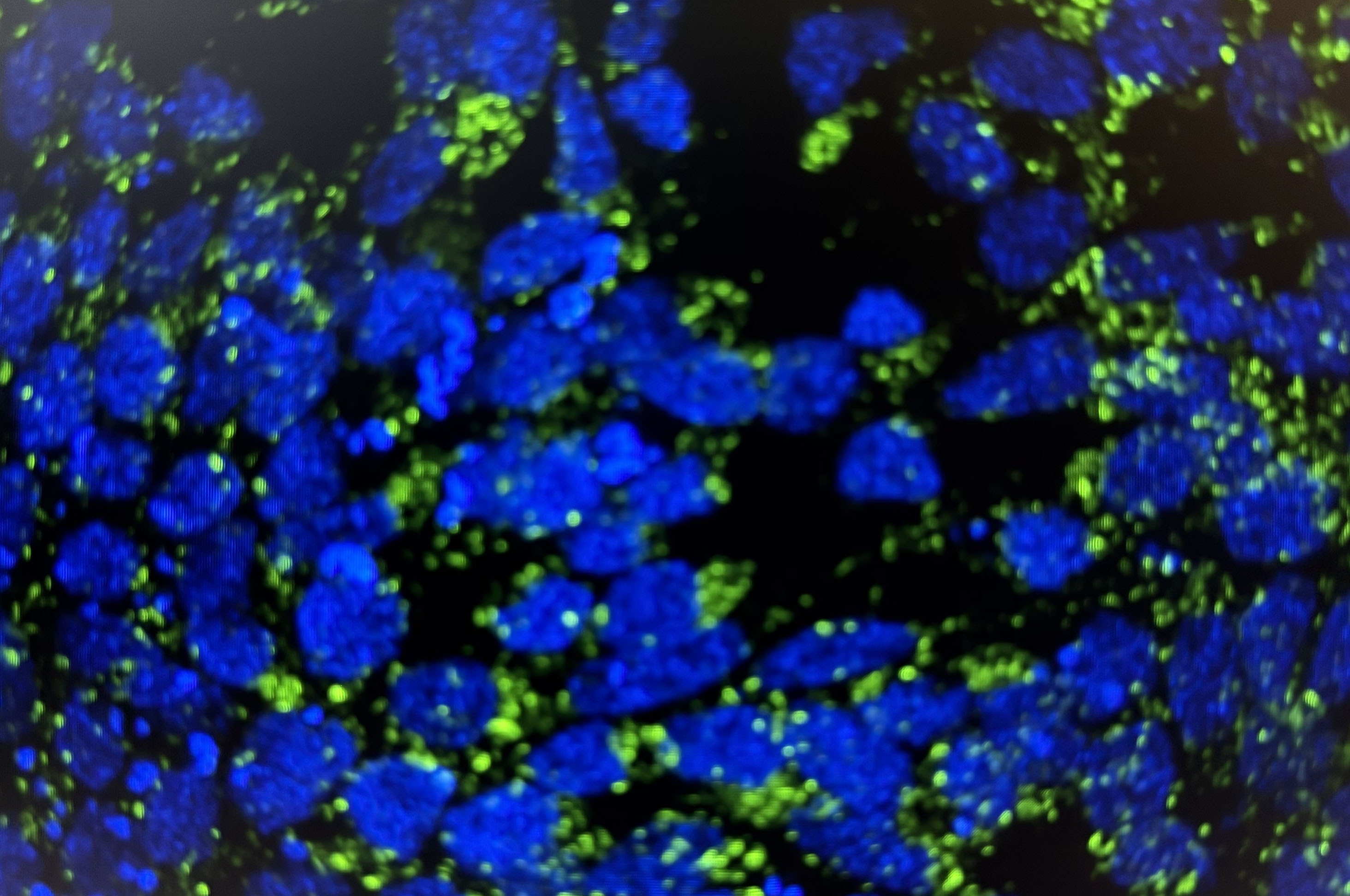 |
